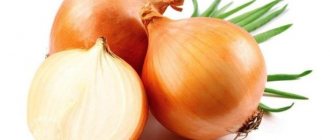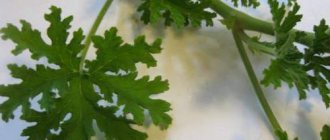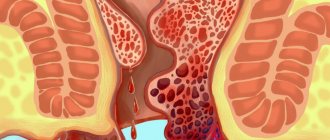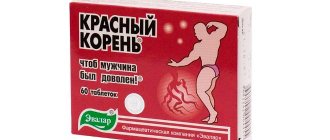Chemical composition
The root part of calamus has a beneficial composition. Let's consider the main microelements of its structure:
- Essential component;
- Tanning components;
- Acorin glycoside;
- Alkaloid calamine;
- Vitamins;
- Starch;
- Protein;
- Minerals;
- A small amount of scented soap;
- Asaron;
- β-pinene;
- β-calamen;
- Calamenon;
- Calamendiol;
- Borneol;
- Ethanoic and valeric acids;
- Iodine.
Each of these elements helps in the treatment of certain diseases, which we will talk about later.
Calamus root and Irish moss
One of the most effective folk recipes for cough is a combination of calamus and Irish moss. The product actively thins mucus and promotes the removal of phlegm. It is allowed to use the decoction in the treatment of children, but after prior agreement with the pediatrician. Preparation:
- Take both components in equal parts and cut with a knife (you will need 45 grams of vegetable raw materials).
- Pour boiling water (450 ml) and leave for half an hour.
- Place over high heat, bring to a boil, and immediately remove from heat.
Article for you:
Birch decoction: what is useful, what helps, how to prepare and take
If you are not allergic to bee products, you can add a little honey to improve the taste. Take 60-80 ml at a time. The beneficial liquid works most effectively on an empty stomach. The duration of the course is a week; if coughing attacks do not lose intensity, stop using it and consult a doctor.
Collection and preparation of calamus
Plant harvesting is carried out in the early period of autumn, before winter takes over. This procedure is carried out according to the following scheme:
- It is necessary to collect calamus from under the silt using a rake;
- The selected rhizomes are washed and the leaves are removed;
- The roots are left in the open air for several days;
- Cut them into pieces, the length of which is no more than 20 cm.
Reference! In the case of a thick root, it must first be split.
- The finished raw materials are dried in a container with an iron lid at a temperature of no more than +35 degrees.
Important! You can't increase the temperature. This promotes rapid volatilization of the essential oil.
- The harvest is considered complete if the rhizomes are easily broken.
Dried roots have a fairly small mass. The outer part of the rhizome is yellow-brown in color, while the inner part is white or pinkish. The taste of the raw material is bitter-spicy.
Calamus root - dental healer
Naturally antiseptic, calamus is considered the best plant for teeth and gums.
- It neutralizes harmful microorganisms and has a strong astringent effect, thereby helping to relieve the inflammatory process.
- Calamus can also cope with stomatitis - powder from the root of the plant is sprinkled on wounds and ulcers in the oral cavity.
- In addition, it perfectly removes such an undesirable phenomenon as bad breath.
- Both calamus root powder and tinctures based on it are used, which are used to treat periodontal disease, as well as for a general strengthening effect on the gums and tooth enamel.
A well-known expert in alternative medicine, Bolotov, advised mixing calamus root and propolis for rinsing.
Why not try it, because there will definitely be no harm from such a practice if there are no general contraindications to the use of the plant.
Useful properties of calamus
Root
The root of this plant has earned love and respect from traditional healers since ancient times. Calamus tincture with alcohol is very popular and is used to treat many ailments.
The medicine from the root part of calamus is well used for cosmetic purposes. It helps strengthen the structure of curls and is good for getting rid of seborrhea.
Flatbread rhizome
Diseases specific to the fair half of humanity can also be easily treated with this decoction.
It is recommended to sprinkle powdered calamus root on wounds that have festered.
The category of the population that suffers from ailments of the gastrointestinal tract can ease their well-being by consuming a decoction of the plant internally. In addition, preventing stomach pain by consuming a decoction helps improve the quality of appetite and digestion. For heartburn, traditional healers advise simply chewing calamus root.
A particularly valuable area of the plant is its root region. Calamus rhizomes are widely used in many areas of traditional medicine. They are not only a component of alcohol tinctures, but also an important component of infusions and teas. The pureed root is used as a medicinal powder for skin diseases, and will additionally help in the treatment of colds.
Calamus has one unique property - neutralizing narcotic drugs, stopping their effect.
To improve memory functioning, a little powder is mixed with part of a teaspoon and consumed in the morning and evening. Calamus also has an analgesic and anti-inflammatory effect.
Flowers
Although calamus flowers are not particularly popular among gardeners, they have a lot of positive qualities:
- Endurance;
- Unpretentiousness;
- Does not require much time for care;
- Grows well in dark spaces;
- Does not require soil fertilization;
- At any time, you can prepare a useful medicine from it for the purpose of treating diseases of the intestines and stomach; in addition, it helps well with excessive hair loss.
Tatar flowers
The marsh calamus has inflorescences that resemble cobs. Their size ranges from 3 to 14 cm in length. The fruits of the plant are elongated red berries. Berries and inflorescences have no healing power.
Oil
Calamus oil has a specific smell and is not used in its pure form. It is usually combined with any other base oil. With its help, inhalations are made, which help relieve nervous tension. In addition, this procedure is also effective in treating cough, bronchitis and other respiratory diseases.
In cosmetology, this component is the basis of anti-aging preparations. It is also included in painkillers due to its antispasmodic effect.
Grass
Calamus grass blades do not have a medicinal effect and, accordingly, are not used in medicine.
Tincture of calamus and calendula to improve vision
You need to prepare the tincture:
- 4 tbsp. l. calendula flowers;
- 4 tbsp. l. chopped calamus root;
- 1 liter of vodka.
Infusion time – 2 weeks. The finished tincture is filtered and poured into 2 half-liter bottles. They are stored in a cool place.
The medicine is taken 3 times a day, a teaspoon half an hour before meals. When the first bottle runs out, take a break for a month. Then continue taking the tincture according to the same scheme. The course is recommended to be carried out once a year.
Application of calamus
Main areas of application of calamus:
- Pathologies of the digestive system;
- Respiratory system;
- Circulatory system;
- Reproductive and renal systems;
- Nerve system;
- Skin diseases.
In folk medicine, the root part of calamus is used. They treat such serious diseases as:
- Cholera;
- Flu;
- Bronchitis;
- Rickets;
- Malaria;
- Chronic spinal cord pathologies.
In addition, calamus roots are good for treating diseases of the renal system, have a tonic effect on the nerve system, and have a beneficial effect on hearing and vision.
Also, some recipes allow you to use calamus as a mouth rinse, which effectively eliminates bad odors and heals your gums.
The oil prepared from the rhizomes of this plant has found good use. It is used not only in the cosmetic industry, but also for medical purposes. Daily consumption of oil improves the musculoskeletal system, promotes rapid muscle regeneration and strengthens bone tissue. This drug has long been used as an aphrodisiac.
Attention! Calamus root in powder form must be taken without exceeding the daily dose, which is 0.2 grams.
Preparing the tincture
It is best to dig up the roots in mid-October, by which time they accumulate maximum healing properties. They need to be washed well, cut into pieces and dried at room temperature.
The tincture is made with alcohol, high-quality vodka or purified moonshine.
On alcohol
- Calamus - 50 gr.
- Alcohol 70% - 0.5 l.
The root is crushed, filled with alcohol and placed in the dark for 2 weeks. Every two to three days you need to shake the contents. Filter and use.
Usage
Depends on the diagnosis. Helps well with dental diseases. Removes inflammation and acts as a pain reliever. Recommended as a rinse after tooth extraction.
On vodka
- Calamus - 100 gr.
- Vodka - 0.5 l.
Preparation is similar to the method described above. After filtering, pour into dark glass bottles.
Calamus recipes
There are a great many ways to use this member of the arum family. Let's look at the main and most important ideas:
For women
In order to normalize the menstrual cycle, you should take the same amount of this plant, oregano, sage, motherwort and flax seeds. Pour ten grams of the mixture into 400 ml of hot water. The boiling procedure is carried out for five minutes over low heat. Next, the composition is kept for two hours and drunk in 4 doses.
For men
It is necessary to collect 12 grams of a mixture of calamus, elecampane, sage, immortelle flowers, yarrow, mordovnik, knotweed, motherwort, plantain, fennel and rose hips. Pour half a liter of non-hot water over the entire collection. The broth is boiled, then kept for two hours in a warm place. The medicinal drug is consumed 4 times a day, half a glass.
Calamus root for hair
To get rid of excessive hair loss, it is recommended to prepare a decoction of this plant and burdock root. They need to wash their hair three times a week.
Calamus root and calendula for vision
In order to improve visual function, you need to combine two tablespoons of dry calamus in the same proportions with calendula. The mixture is poured with half a liter of vodka. Keep in a dark space for two weeks, sealed with a tight lid. In this case, the mixture must be shaken periodically. For one year, the decoction is used one teaspoon half an hour before meals.
Calamus root against nail fungus
The plant, in the amount of 15 grams, is poured with 250 ml of boiled liquid and boiled for ten minutes. Before use, the decoction is pre-cooled and decanted. Therapy consists of consuming one teaspoon of the drug three times a day.
Calamus root for treating teeth and gums
Twenty grams of the plant are poured with 100 ml of alcohol. The tincture is kept for 14 days in a place inaccessible to sunlight. The medicine must be shaken periodically. Then it is filtered and stored in a dark container with a tight lid. If you have a toothache, rinse your mouth with the tincture for 10 minutes. If necessary, the rinsing procedure can be repeated.
Important! The tincture should not be swallowed!
If there is pain in the gum area, it is necessary to lubricate the gums with tincture. To make gums stronger, connoisseurs advise chewing the rhizomes of the plant.
For the treatment of gastritis and ulcers
To get rid of the disease, calamus rhizomes are combined with St. John's wort and immortelle. Take one tablespoon of these herbs and pour over a glass of water. The mixture is boiled, then cooled to room temperature and consumed up to 4 times a day, half a glass, right before meals.
For worsened ulcers, you need to collect 12 grams of a mixture of the following herbs:
- The root part of calamus;
- Leaf watch area;
- Sweet clover grass;
- St. John's wort;
- Subsistence;
- Celandine;
- Icelandic moss.
- Chamomile flowers.
These products are taken in equal parts and 400 ml of non-hot liquid is added. Next, keep in a water bath for 15 minutes. The broth is infused for about an hour and a third of a glass is consumed between meals.
For the treatment of skin diseases
To cure skin diseases, experts advise collecting 8 grams of a mixture of medicinal herbs, namely:
- Calamus roots;
- Heather shoots;
- Nettle;
- Alternately;
- Juniper fruits;
- Pine buds;
- The root part of the steelhead.
Everything is taken in equal quantities and 350 ml of hot water is poured. The solution is infused for two hours, then brought to boiling point. The decoction is drunk cooled before meals. The course of treatment procedures is 4 times.
Other recipes
In addition, calamus root helps in the treatment of sore throat . It needs to be chewed every day for six months, 5-6 times a day. The plant should be in the mouth area for at least 10-15 minutes.
Calamus root will also be a good helper in the treatment of chronic tonsillitis Two tablespoons of the plant are poured over 200 ml of boiling water. Close tightly and leave to “steam” in a water bath for half an hour. The broth is filtered and gargled several times a day.
To treat anorexia and improve appetite, prepare a tincture of two teaspoons of calamus rhizomes and a glass of hot water. The infusion is kept in a thermos and then consumed 3-4 times a day in the amount of 50 ml per dose. The decoction is consumed 30 minutes before meals.
In order to improve the digestion process, it is recommended to drink a decoction from the roots of the plant. Take calamus in an amount of 15 grams and fill it with water, the volume of which is 0.5 liters. The resulting drug is placed on the stove and cooked for ¼ hour, tightly covered with a lid. The decoction is consumed three times a day.
Ground calamus root can relieve heartburn. Treatment consists of drinking one teaspoon of powder three times a day.
Drinking calamus tea will help the fair half of humanity quickly get in shape. To prepare the drink, take one tablespoon of roots, combine with two tablespoons of mint leaves and add just a little buckthorn. The collection is steamed with a glass of boiling water and kept for four hours. The decoction is drunk three times a day, half an hour before the intended meal.
Tea
Calamus helps to improve blood circulation in the body. To do this, you need to take hot baths every day. At the same time, after the end of the procedure, the limbs are not wiped.
Juice from calamus roots treats diseases of the eye area. To improve visual function, you need to dilute it with water in a ratio of 1:10 and instill it. In addition, the procedure of lubricating the eyelid area with freshly squeezed juice helps to restore vision.
To normalize loose stools, prepare a potion from two teaspoons of calamus root and a glass of boiling water. You need to infuse the medicine for two hours, then strain and drink a quarter of a glass three times a day, half an hour before eating.
To improve the condition of a patient suffering from hemorrhoids, you need to pour 30 grams of calamus rhizomes with a liter of water. You need to take baths with this decoction until improvement is observed.
Reference! An overdose of calamus can be detected by a change in the color of the stool to black. This process is also characterized by vomiting and diarrhea. You should immediately stop using calamus in any form.
Calamus medicinal properties
Calamus rhizomes contain a large amount of essential oils, the components of which are substances such as calamenon, O-camphor, O-camphene, eugenol, curcumene, acoron, valeric and acetic acids, and phytoncides. In addition, they are rich in acoretin, acorine, calamine, tannins, ascorbic acid, choline, vitamins and starch.
Essential oils and acorin bitterness found in the roots of the plant activate the secretion of gastric juice and, by affecting taste buds, increase appetite and normalize the digestion process.
Even Hippocrates in his writings described the healing properties of this plant and its influence on the functioning of many organs and systems of the human body. Avicenna recommended taking preparations from rhizomes to those who suffered from stomach and liver diseases.
Preparations prepared from calamus rhizomes are prescribed for the treatment of cardiovascular diseases, as well as wound-healing, anti-inflammatory and bactericidal agents. They also improve brain function. Due to the presence of terpenoids in the composition, preparations from calamus rhizomes have some antispasmodic effect.
Infusions, tinctures and decoctions from calamus rhizomes help improve the functioning of the gallbladder and urinary system organs, and relieve pain of various origins.
In Korean medicine, preparations from calamus rhizomes are recommended for stomach disorders, decreased vision, memory loss, dystonia, flatulence, cardioneurosis, furunculosis and arthritis. Chinese healers use them to treat rheumatism, ear diseases, cholera and epilepsy.
In Indian medicine, preparations from calamus rhizomes are used for tuberculosis and as an antibacterial agent, and in Tibetan medicine - for the treatment of gastroenteritis and ulcers on the mucous membrane of the larynx. In Bulgaria they are recommended for anemia, dysminorrhea, stomach colic, as well as for diseases of the gallbladder, liver and kidneys.
In Europe, preparations from calamus rhizomes have long been used for various diseases: colds, flu, dropsy, inflammation of the renal pelvis, heartburn, stomatitis and periodontal disease, arthritis, rickets, gout, malaria, allergic manifestations, diseases of the gastrointestinal tract, urinary tract, female genital , respiratory and cardiovascular systems, brain diseases, as well as abscesses and seizures. In the old days, it was believed that chewing fresh calamus stems would help prevent the development of such serious illnesses as typhus, cholera and influenza.
In addition, it is used in folk medicine:
- for diseases of the stomach and intestines, flatulence, poor appetite, nausea, vomiting;
- for the treatment of colds and bronchitis;
- for cholelithiasis and urolithiasis;
- for the treatment of female diseases, menopause. To enhance potency;
- for baths for infectious skin diseases. To enhance hair growth. In Ayurvedic medicine, calamus is used to cleanse the blood and blood vessels of toxins, for memory impairment, headaches, and neuroses.
Calamus rhizomes contain up to 150 mg% vitamin C, in leaves, stems and inflorescences - up to 130 mg% vitamin C. This vitamin is extremely useful for weak nerves, poor concentration, increased physical and mental fatigue, stress and depression, insomnia, weakness body immunity.
Recipes:
Drowsiness. In the evening, drink an infusion of 1/2 teaspoon of calamus root powder and 1/4 teaspoon of ginger powder per cup of water.
It is always useful to have a tincture of calamus rhizomes in the house:
Tincture. Pour 100 g of dry crushed calamus rhizomes into 1 liter of vodka, leave in a dark place at room temperature for 15 days, shaking the contents periodically, then strain. Take 1-2 tbsp. spoons 3 times a day before meals, washed down with water. The tincture is bitter, but its healing properties are worth keeping at your disposal at all times. The tincture has an excellent tonic effect, and the corresponding “thoughts move”, and at the same time treats the gastrointestinal tract and relieves nervous tension.
For increased acidity of gastric juice, chronic constipation, frequent heartburn and flatulence, take 1 tbsp. a spoonful of calamus roots, dried and crushed orange peels, tansy grass flowers; 1 pinch of valerian roots, St. John's wort, marshweed, pour 1.5 liters of fortified red grape wine and leave in a dark place for 3 weeks, shaking daily at noon, strain, squeeze out the raw materials. Take 1 teaspoon three times a day 15 minutes before meals, washed down with warm honey water (1-2 sips). The same infusion will also help with poor appetite. The course of treatment is up to 3 weeks.
Store the infusion in the refrigerator or in the cellar.
Fresh calamus rhizome is an excellent remedy for the treatment of fibroids. Take 1 tbsp of root gruel. spoon 3-4 times a day 30 minutes before meals.
At the same time 1 tbsp. pour a spoonful of dry crushed celandine herb into 0.3 liters of cold water, bring to a boil, leave, wrapped, for 6–8 hours, strain. At night, do slow (drip) douching with infusion for 1.5 hours. The course of treatment is 1–1.5 months.
2 tbsp. Mix spoons of fresh calamus root gruel (or 1 tablespoon of dry root powder) with 50 g of aloe juice and 50 g of honey, leave in a dark, cool place for 3 days, shaking the contents periodically. You will receive a mixture that is indispensable in the treatment of fibroids. Take 1 tbsp. spoon 3-4 times a day an hour before meals.
Useful in the treatment and prevention of malignant neoplasms of various localizations “calamus wine”. Wine tincture is used to prevent severe vomiting.
Wine. Pour 100 g of fresh crushed calamus rhizomes with a liter of natural grape wine, leave for 14 days, shaking the contents periodically, and strain. Drink 1-2 tbsp. spoons 30 minutes before meals and 30 minutes after meals.
For muscle tension in the upper body, take an enema with 1 cup of calamus oil and hold for 30 minutes.
Calamus essential oil (pharmaceutical preparation) is taken orally, 2-3 drops with a coffee spoon of honey 3 times a day as a sedative for hysteria.
For insomnia, it is useful to take baths from a decoction of calamus rhizomes for three to four weeks (you can also use leaves and stems). Pour 200 g of dry or 0.5 kg of fresh crushed raw materials into a bucket of boiling water and cook in a sealed container over low heat for 15 minutes. The decoction should be steeped, wrapped, for one to two hours, strained and poured into the bath. The water temperature in it should be 36–37 degrees Celsius, the duration of the bath should be 10–15 minutes. The bath should be taken two hours before bedtime. After a bath, it is useful to drink any of the natural sedatives recommended for insomnia.
For insomnia caused by depression, neuroses, neurasthenia, a collection of calamus rhizomes, peppermint leaves, sorrel, St. John's wort, taken in equal parts by weight, is useful.
Infusion. 1 tbsp. pour a spoonful of the dry, crushed mixture into 1 cup of boiling water, leave, covered, for two to three hours, strain. Drink 1 tbsp. spoon 3 times a day before meals.
For men with insomnia caused by weakened sexual function, it is useful to take this infusion of calamus rhizomes: 1 tbsp. pour a spoonful of dry crushed calamus rhizomes into 0.5 liters of boiling water and leave in a tightly sealed container overnight (preferably in a thermos), then strain. Drink 3 tbsp. spoons 3 times a day in between meals.
Calamus rhizomes are placed in compotes of fresh and dried apples, pears, and rhubarb. They are also boiled in syrup and candied for confectionery. Candied rhizomes are a useful delicacy for weakened sexual activity in men and for disorders of the nervous system.
It is advisable that calamus root and leaves be constantly in your home medicine cabinet. There is no price for this beautiful plant - the benefits from it are incredible.
Dried calamus rhizomes have a strong spicy smell, tart and spicy taste. Used as a spice instead of bay leaf, ginger and cinnamon. Add to soups, fish broths, fatty fried meats, fried potatoes and vegetables. Leaf powder is added to dough to bake aromatic bread. It improves the taste of sweet dishes, fruit soups, salads. Jam is made from the inner whitish leaf rosette or rhizomes, and they are candied.
“Place pieces of calamus root in the corners of your apartment to avoid poverty, hunger, and disease,” magic healers recommend.
The use of calamus in cooking
The rhizomes of the plant have found their use due to their delicate aroma with hints of spice. Calamus is used to prepare canned fish, as a substitute for less accessible spices, and also for preparing alcoholic cocktails.
Spices
Calamus essential oil is used to improve the aroma of baked goods, compotes, jelly and soups with fruit.
Calamus leaves are added to various salads to enrich them with nutritious and healthy ingredients.
Calamus root tincture
The wonderful calamus plant is one of my favorites. I use it often, especially since it has a wide range of action. The plant oil benefits the entire body. It is often used to treat hair and various diseases. As a spice, the plant has found its use on our tables, and you can read about the beneficial properties of the roots in this article, as well as learn about the benefits of the plant for the stomach.
The washed calamus roots are dried, crushed, and poured with half a liter of good vodka. The tightly closed product is left in a dark place for two weeks. Take from ten to 15 drops, it all depends on the disease. For stomach ulcers, gradually, starting from 10 drops, increase the intake of the remedy to a tablespoon. Use three times, diluting with water before meals. Treatment lasts for four weeks.
Contraindications
The use of calamus is not recommended for the following categories of citizens:
- Those who have bleeding, regardless of their nature;
- Suffering from hypotension;
- Those who have increased acidity of gastric juice;
- For peptic ulcer disease in the acute phase;
- Women during pregnancy;
- Patients suffering from inflammatory diseases of the renal system in the acute phase;
- In the presence of individual allergic reactions.
Biological description of calamus
An aquatic or coastal plant with a thick, long (sometimes up to 50 cm or more), creeping, spongy rhizome with a pleasant smell and a burning taste. The leaves are erect, unbranched, triangular, with a sharp-edged flowering stem, with a groove along one edge. In the conditions of the European part of Russia, adult plants reach a height of 50 to 120 cm.
The whole calamus plant has a pleasant spicy smell. Blooms in June – July. Small bisexual flowers with a yellowish-greenish perianth are collected in an inflorescence - a spadix 4-12 cm long, deflected from the stem. From the base of the peduncle on one side extends a long green sword-shaped blanket, which resembles a leaf and seems to directly continue the stem. The fruit is leathery.
The pollen is carried by insects that live, as was said earlier, within the natural distribution of calamus; in Europe there are none, so here the calamus does not bear fruit (does not produce seeds), but reproduces vegetatively quite intensively.
The leaves of calamus are bright green, narrow-linear, fleshy, xiphoid, alternate, 2-5 cm wide and 60-120 cm long, grooved on one side, with a sharp edge on the other, located in separate bunches on the tops and lateral branches of the rhizomes. The stem is green, unbranched, erect, similar to leaves. The leaves grow together, surrounding the main stem, so that the inflorescence appears to emerge from the middle of the leaf.
The rhizome of calamus is flattened-cylindrical, spongy, thick, sinuous, horizontal, creeping, up to 3 cm in diameter, up to 1.5 m long, brownish or greenish-yellow on the outside, white with a pink tint on the inside, seated below with numerous cord-like roots up to 50 long. cm, arranged in one row in a zigzag manner, covered on top with the remains of leaf sheaths. The rhizomes are located almost at the soil surface, less often at a depth of 10 cm. The taste of the rhizome is bitter-burning, spicy, tart; The smell is strong, pleasantly spicy.
The flowers are greenish-yellow, small, bisexual. The perianth is six-leaved, regular, simple, inconspicuous; its leaves are filmy, with the tips slightly curved inward. The flowers are collected in cylindrical-conical cobs from 4 to 12 cm long and up to 1 cm in diameter (for fruits - up to 2 cm); press tightly against each other on the fleshy axis of the cob. From the base of the cob emerges in the form of a sheath a green, deep-grooved, long (up to 50 cm) covering leaf (“veil”), similar to the other leaves, which seems to be a direct continuation of the flower stem. The stem with the covering leaf (veil) is approximately equal in height to the leaves. The ovary is superior, three-locular, almost hexagonal. There are six stamens, they are opposite to the tepals; single pistil, sessile stigma. In flowers, the stigmas are the first to ripen, and the anthers open only after the stigmas lose the ability to perceive pollen.
Flower formula:
The fruits of the common calamus are multi-seeded, leathery, dry (dryish) oblong berries of red or greenish color, surrounded below by the remains of perianth.
In Russia and Western Europe, this plant reproduces only vegetatively - in pieces of fragile rhizomes, which are formed en masse during ice drift and river floods; they float in the water until they are washed ashore, where they germinate.











